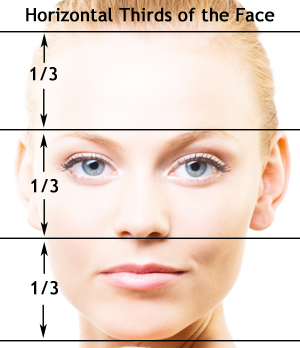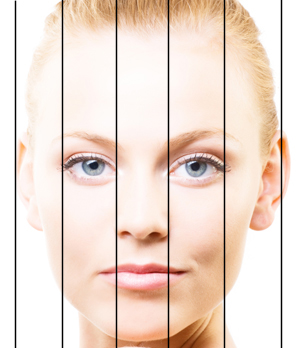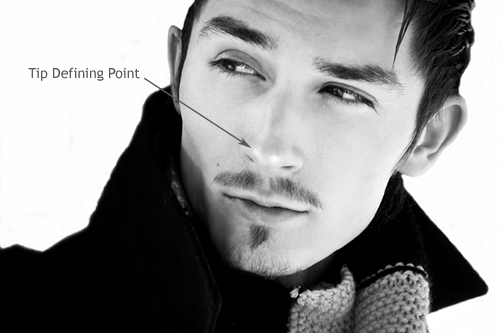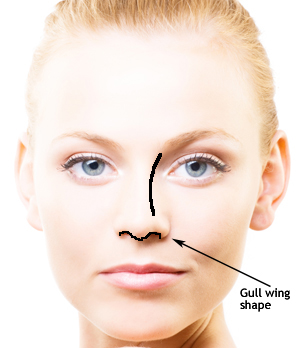Rhinoplasty Concepts: The Make Up of…Makeup
Reshaping the nose is one of the most common concerns my patients have. As such, I have spent a great deal of time focused on the problems unique to noses in general, as well as those specific to each ethnicity. Naturally, individual cultural preferences play a large role in defining beauty of the nose. I first began researching some of these influences while in college as part of a degree in East Asian Studies, which included trips to Asia. I then traveled to Europe and Africa to learn more about how distinct cultures influence each other. Forming the appropriate contours in the nose so that it is not only shapely and proportionate to the rest of the face, but also reflects light in a comely manner requires knowledge, skill, and not a little artistry.
In this first entry on rhinoplasty, or reshaping of the nose, I plan to discuss the non-medical options for making the nose appear more proportionate to the face. In general, the nose helps to form the middle portion when dividing the face into horizontal thirds, and its base should be about the distance between the eyes, which makes up one vertical fifth of the face (see the figures below).
There should be a curved, unbroken line sweeping from the eyebrow to the tip of the nose on each side (see below). In addition, light reflection from the skin overlying the tip should appear as two "tip-defining points," which are also noted in the figure below. These represent the cartilage structure beneath the skin. When a nasal tip is especially bulbus, refinement of these cartilages can provide a more nuanced, attractive nose that is more proportionate to the face.
From the frontal view, the nostrils should be partially visible, and the features that form them (namely, the columella and alar rims) should have the shape of a gull in flight (figure marked above). While this is not a comprehensive review of all the features of the nose as seen from the frontal view that are addressed in rhinoplasty, I hope that this provides a starting point to understanding the nose.
Given these basics, I spoke with several makeup artists regarding their approaches to the nose. Many of the concepts they describe have to do with shading the nose to hide irregularities and control volume. The two videos below show some common techniques (I am not associated with these makeup artists).
As you may notice from these videos, each model is photographed from the front only. Also, the first model already has a reasonably proportionate nose before any makeup is applied. For the nose in the second video, additional volume is given to the bridge of the nose (between the eyes) by shading each "side wall" and the tip is narrowed by much the same method.
These makeup tricks, while useful for photography, do not always translate as well in the real world, where not everyone will view you from the front only. The lateral profile of your nose remains unchanged by the optical illusion formed by makeup and shading. In my next entry, I will review some ideal proportions of the nose when viewed from the side, then discuss nonsurgical techniques with little to no downtime that can improve the shape of the nose. We'll cover everything from smoothing out bumps to forming a bridge that isn't there (yet!), and discuss the how and why of it all.





